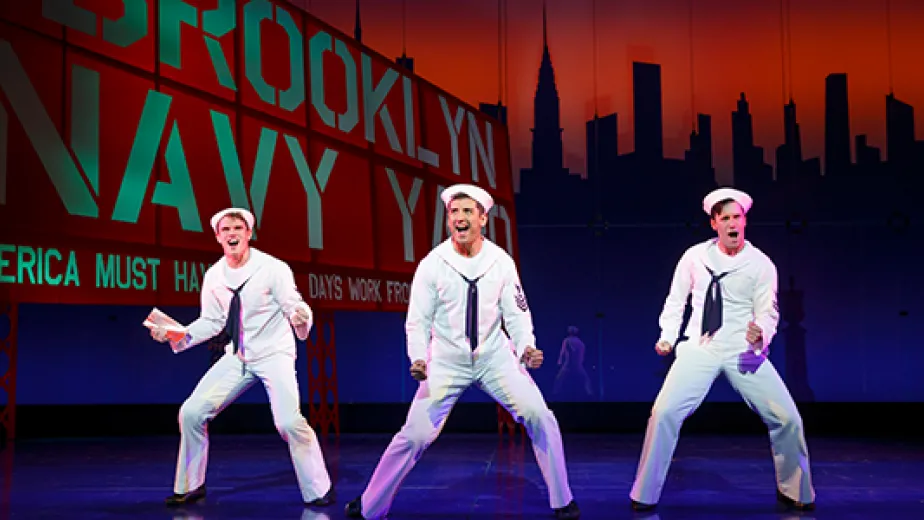
The beginning of the ballet Fancy-Free opens on a quiet corner outside a bar in New York City. It’s not quiet for long though. Three young sailors burst on stage, excited and full of life. They are ready for a night of drinking, goofing off, and flirting with girls.
While such a scene would be commonplace in a movie today or any Friday in the city, this evocation of everyday life was revolutionary in 1944, when ballet primarily revolved around myths and kings, and fairy tales. Fancy-Free was the first ballet choreographed by Jerome Robbins. Working with composer Leonard Bernstein, Robbins wanted to bring a modern American sensibility—and sense of cool—to ballet. The choreography reflected a new approach to dance, one where every movement conveyed emotion, attitude, and meaning, without losing the sense of natural movement a character would have in real life. Fancy-Free defied categories and brought the drama and beat of the street to the stage.
And it was just the beginning. Robbins went on to choreograph numerous ballets and 15 musicals. In West Side Story, he captured the vitality and turmoil of youth culture, and in Fiddler on the Roof, he drew from his Russian-Jewish roots to convey the tension between assimilation and tradition.
And though these works date back over 50 years, his moves have not gone out of style, and his influence continues, even after his death. Find out more about his life, work and legacy—and see his choreography in action—at the Museum on August 9.

Want to visit the museum? We would love to have you! Find out all about our offerings here and plan your trip today.

If you join our membership program you can visit the museum any time! Plus enjoy many membership perks at a discounted rate.





